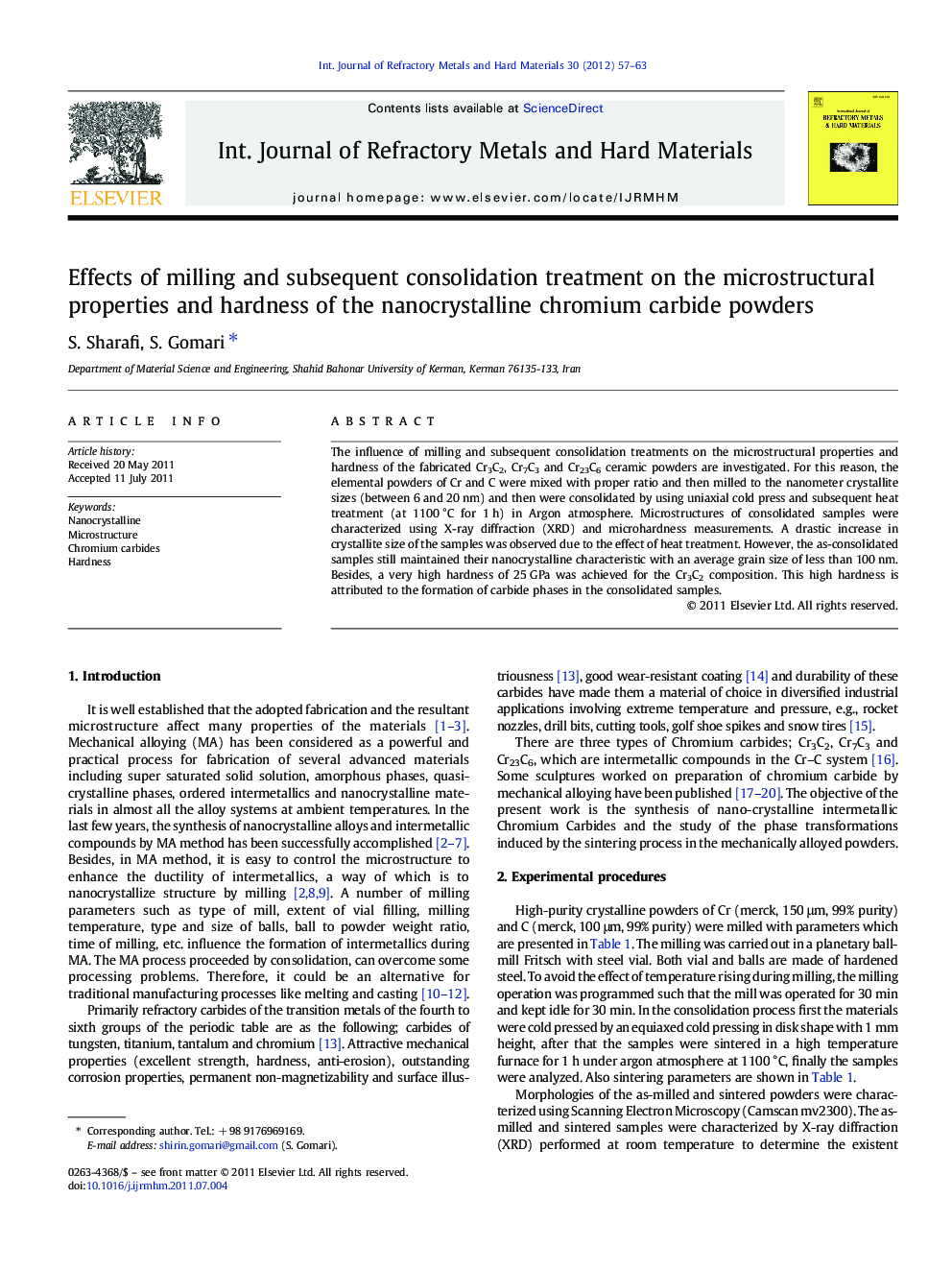| Article ID | Journal | Published Year | Pages | File Type |
|---|---|---|---|---|
| 1603755 | International Journal of Refractory Metals and Hard Materials | 2012 | 7 Pages |
The influence of milling and subsequent consolidation treatments on the microstructural properties and hardness of the fabricated Cr3C2, Cr7C3 and Cr23C6 ceramic powders are investigated. For this reason, the elemental powders of Cr and C were mixed with proper ratio and then milled to the nanometer crystallite sizes (between 6 and 20 nm) and then were consolidated by using uniaxial cold press and subsequent heat treatment (at 1100 °C for 1 h) in Argon atmosphere. Microstructures of consolidated samples were characterized using X-ray diffraction (XRD) and microhardness measurements. A drastic increase in crystallite size of the samples was observed due to the effect of heat treatment. However, the as-consolidated samples still maintained their nanocrystalline characteristic with an average grain size of less than 100 nm. Besides, a very high hardness of 25 GPa was achieved for the Cr3C2 composition. This high hardness is attributed to the formation of carbide phases in the consolidated samples.
►Ultra hard nanostructured chromium carbide powders are produced by high energy ball milling. ►Powders are consolidated by conventional compaction and sintering. ►Cold pressing, samples are sintered at low temperature to avoid the excess grain growth. ►The as-consolidated samples still maintained their nanocrystalline characteristic.
